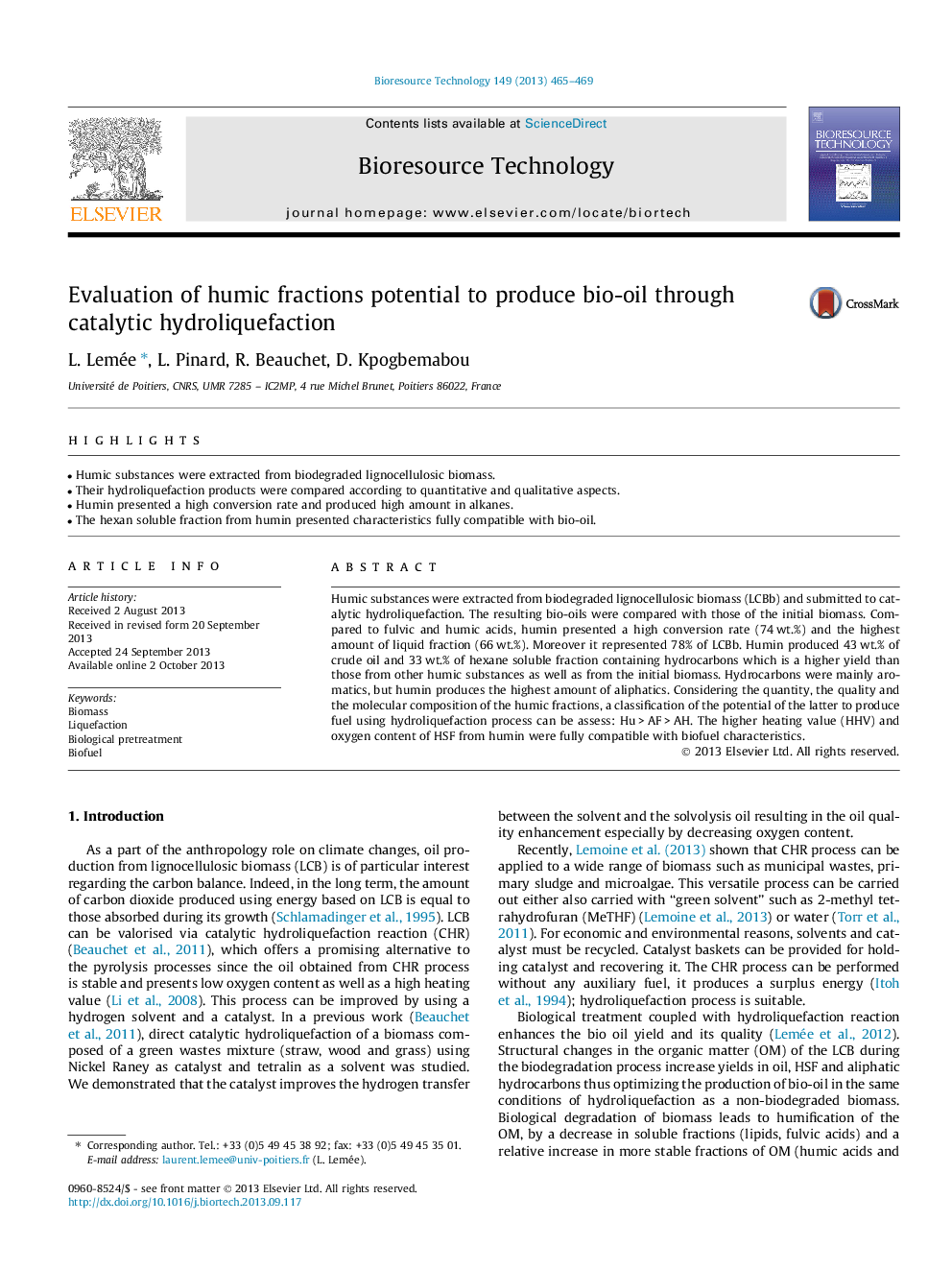| کد مقاله | کد نشریه | سال انتشار | مقاله انگلیسی | نسخه تمام متن |
|---|---|---|---|---|
| 7080639 | 1459994 | 2013 | 5 صفحه PDF | دانلود رایگان |
عنوان انگلیسی مقاله ISI
Evaluation of humic fractions potential to produce bio-oil through catalytic hydroliquefaction
ترجمه فارسی عنوان
ارزیابی پراکندگی فراکسیون های هومیک برای تولید روغن زیستی از طریق هیدرولیفراسیون کاتالیزوری
دانلود مقاله + سفارش ترجمه
دانلود مقاله ISI انگلیسی
رایگان برای ایرانیان
کلمات کلیدی
زیست توده، تبدیل به مایع، پیش درمان زیستی، سوخت های زیستی،
موضوعات مرتبط
مهندسی و علوم پایه
مهندسی شیمی
تکنولوژی و شیمی فرآیندی
چکیده انگلیسی
Humic substances were extracted from biodegraded lignocellulosic biomass (LCBb) and submitted to catalytic hydroliquefaction. The resulting bio-oils were compared with those of the initial biomass. Compared to fulvic and humic acids, humin presented a high conversion rate (74 wt.%) and the highest amount of liquid fraction (66 wt.%). Moreover it represented 78% of LCBb. Humin produced 43 wt.% of crude oil and 33 wt.% of hexane soluble fraction containing hydrocarbons which is a higher yield than those from other humic substances as well as from the initial biomass. Hydrocarbons were mainly aromatics, but humin produces the highest amount of aliphatics. Considering the quantity, the quality and the molecular composition of the humic fractions, a classification of the potential of the latter to produce fuel using hydroliquefaction process can be assess: Hu > AF > AH. The higher heating value (HHV) and oxygen content of HSF from humin were fully compatible with biofuel characteristics.
ناشر
Database: Elsevier - ScienceDirect (ساینس دایرکت)
Journal: Bioresource Technology - Volume 149, December 2013, Pages 465-469
Journal: Bioresource Technology - Volume 149, December 2013, Pages 465-469
نویسندگان
L. Lemée, L. Pinard, R. Beauchet, D. Kpogbemabou,
